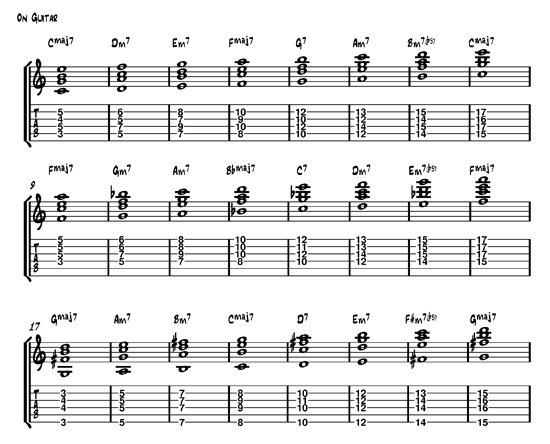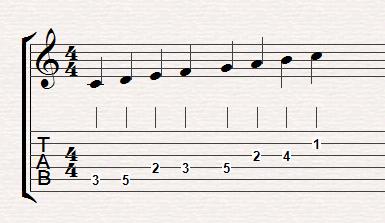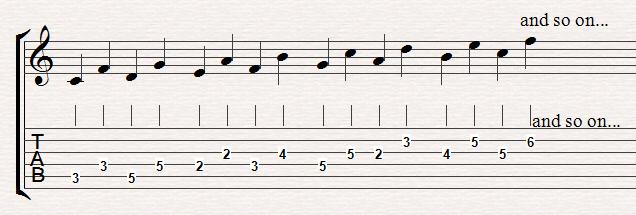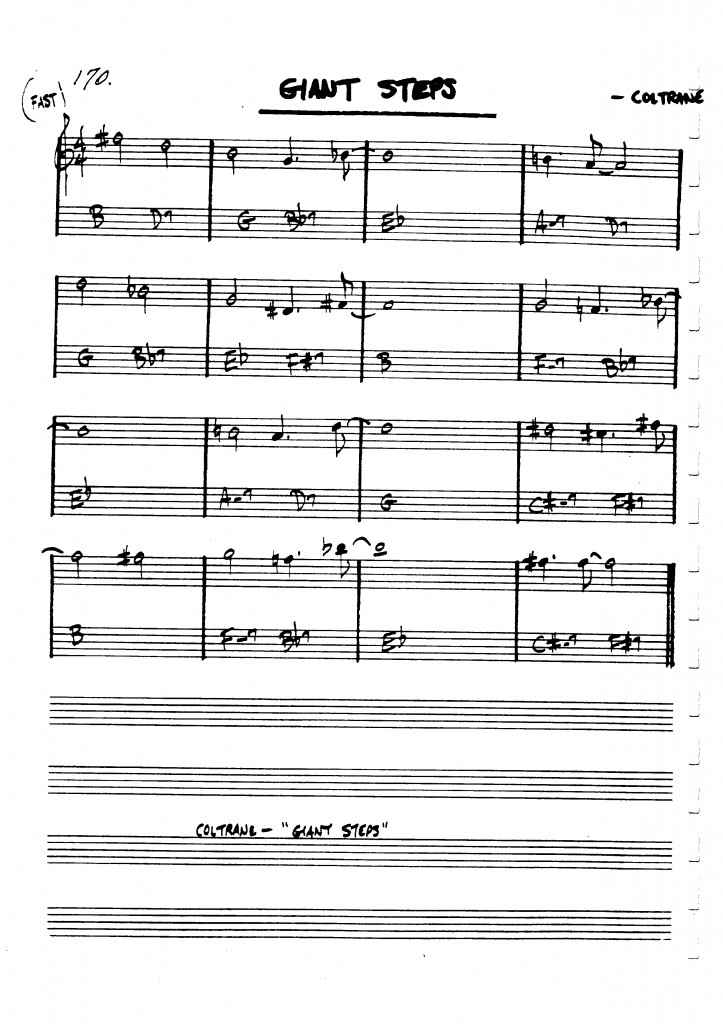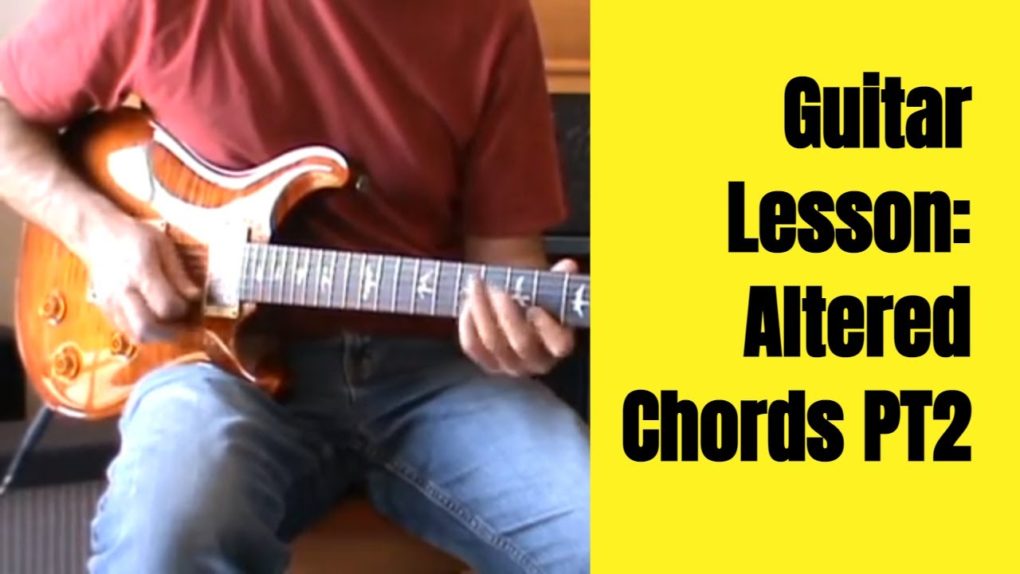We have seen in this post https://www.giannichiarello.com/intervals-explained/ what intervals are in theory and how the simplest and safest way to identify an interval is by calculating the number of semitones between the two notes. Again, this is the table for you to ‘do the math’:
|
N.of halfsteps
|
1
|
2
|
3
|
4
|
5
|
6
|
6
also
|
7
|
8
|
8
also
|
9
|
10
|
10
also
|
11
|
12
|
|
Interval
|
m2
|
M2
|
m3
|
M3
|
P4
|
4aug
|
5dim
|
P5
|
5aug
|
m6
|
M6
|
6aug
|
m7
|
M7
|
P8
|
|
Example
|
C
Db
|
C
D
|
C
Eb
|
C
E
|
C
F
|
C
F#
|
C
Gb
|
C
G
|
C
G#
|
C
Ab
|
C
A
|
C
A#
|
C
Bb
|
C
B
|
C2
C3
|
where m=minor, M=major, P=perfect, dim=diminished, aug=augmented.
If you look closely, you will notice that the notes that are contained in the C major scale (being the example from the note C) are all a major or a perfect intervals.
C-D Major 2nd
C-E Major 3rd
C-F Perfect 4th
C-G Prefect 5th
C-A Major 6th
C-B Major 7th
This stands true for all the major scales in every key. So another quick way to find at what interval distance two notes are, is to calculate from the major scale.
How do I calculate intervals on guitar?
To calculate intervals on guitar is not difficult at all as everything translate in exactly the same way. If I know the notes on the guitar neck this is all very simple as all I need to do is make the calculation like I did above. (Eg: if I am playing a C on the 3rd fret, 5th string and an F# 4th fret 4th string , that is a augmented 4th, just like above).
After a while you will see a some recurring ‘shapes’ and you will learn to quickly recognise an interval by the shape it draws on the fretboard, just like you do with chords: the following is an attempt to summarize all these shapes. Maybe not complete, but I hope it will help.
Click on the images below to download the interval charts PDF files:
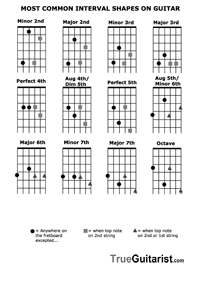
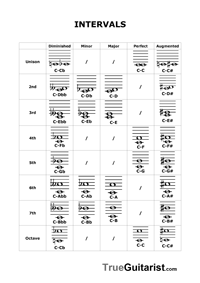
Both these resources are from ‘The Guitar Kit Pro’, where the files will be higher resolution and unbranded: read all about it here: ‘The Guitar Kit Pro’ . Keep supporting this site by purchasing the products on the Shop page, thanks!
